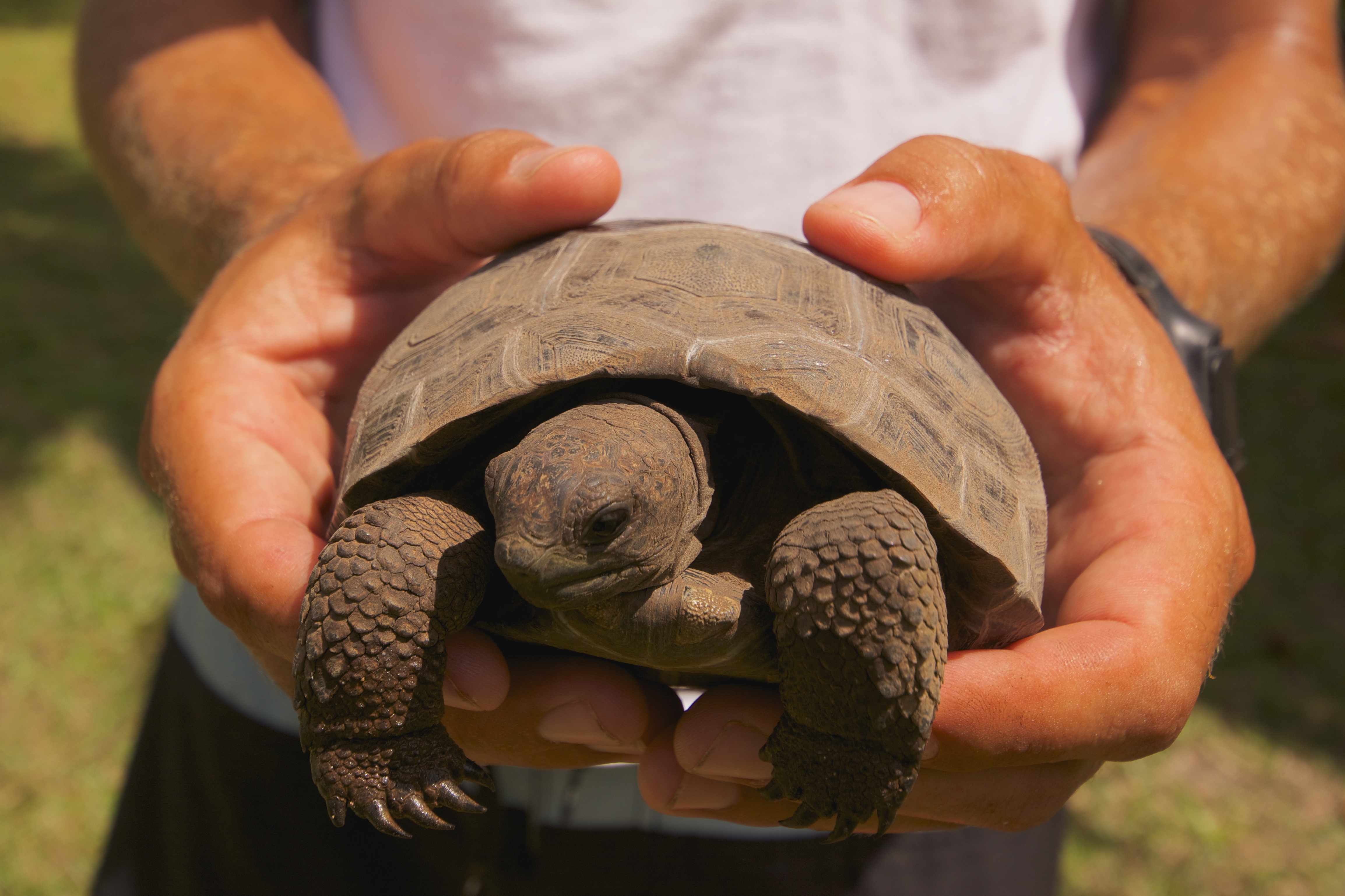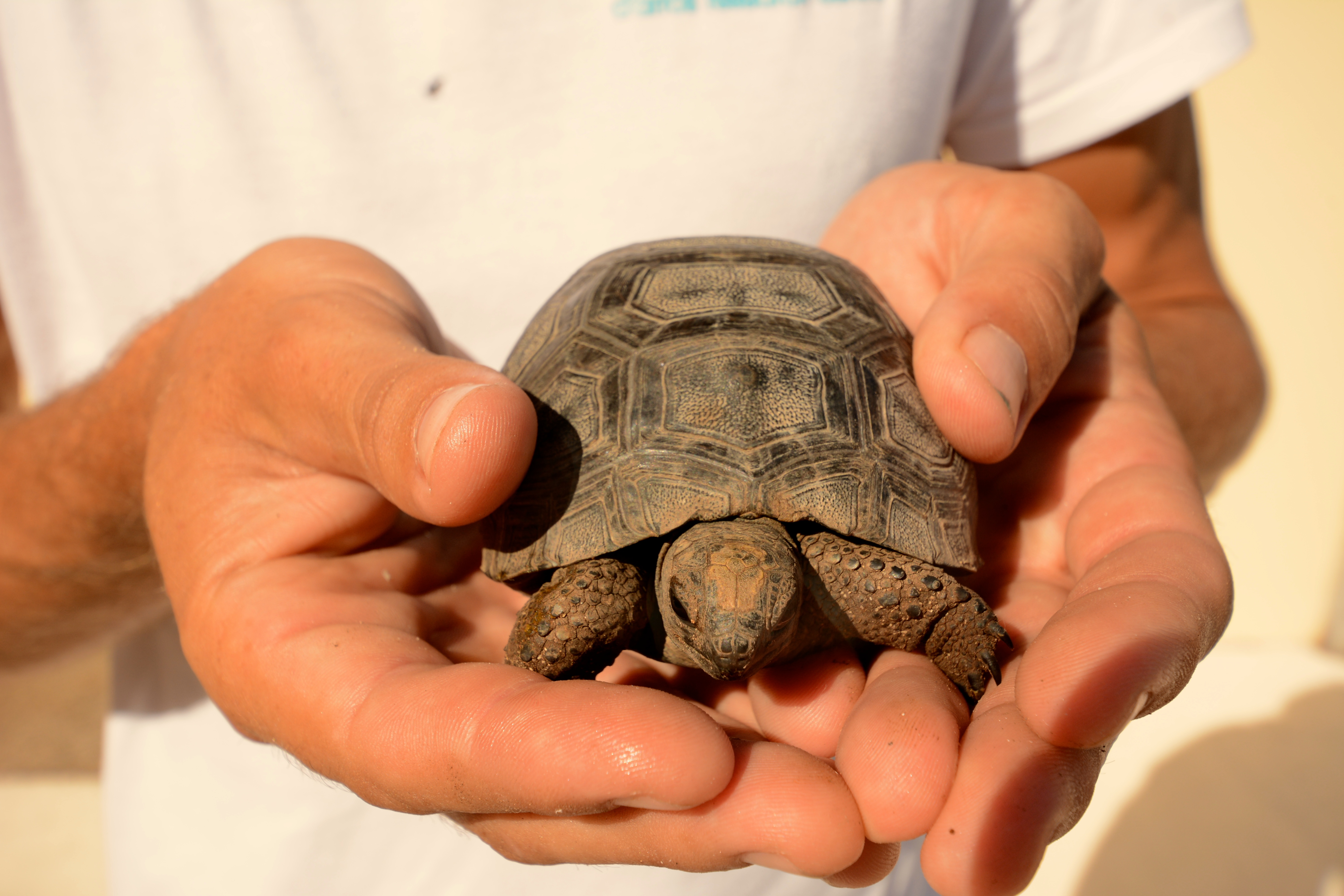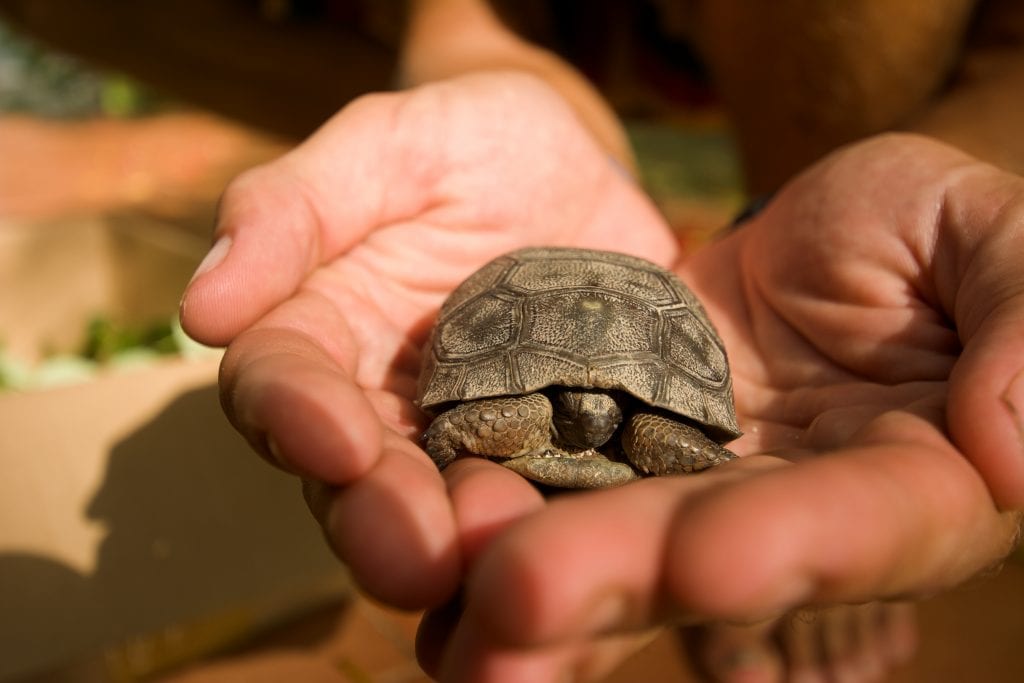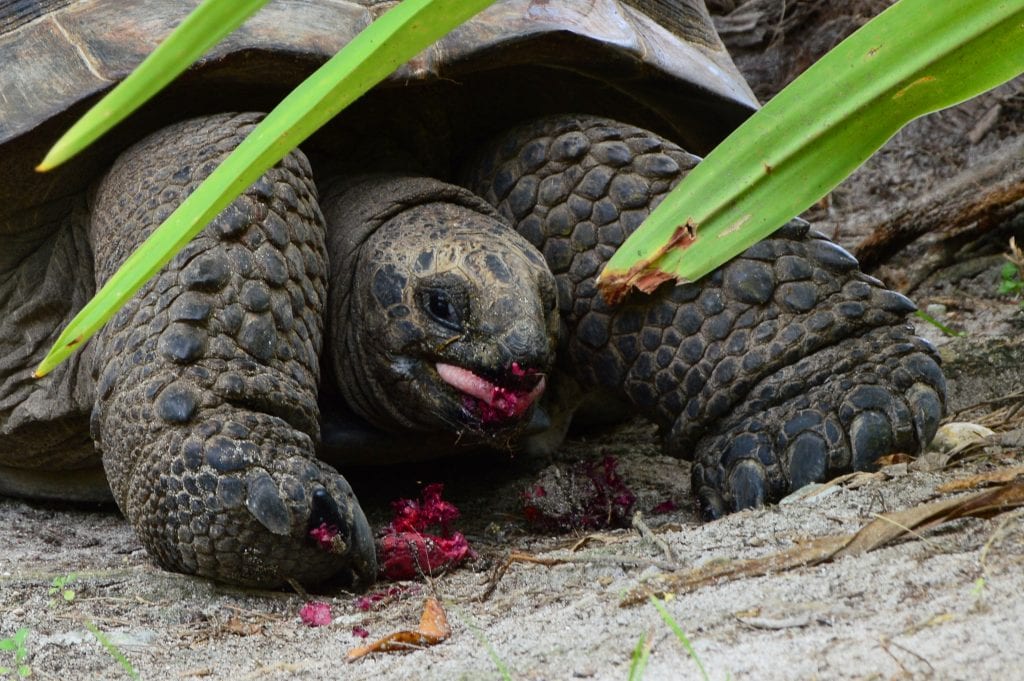Aldabra giant tortoises on D’Arros
Words by Kerryn Bullock
One of the many awesome creatures roaming freely on D’Arros Island in the Seychelles is the prehistoric-looking Aldabra giant tortoise Geochelone gigantea. The island is privileged to be home to a free-ranging population of these magnificent, slow-moving creatures. Some individuals may live for more than 100 years and weigh up to 250 kilograms. These very large tortoises have a domed, dark grey-brown shell and thick, wrinkled grey skin. Excluding the giant tortoise, the Seychelles has a total of 22 other reptile species that are currently recognised as native species.
Unfortunately, giant tortoises have a very sad past at the hands of man. Most of the species are extinct today because sailors hunted the adults for food and introduced predators feasted on hatchlings. Fortunately some tortoises survived on the island of Aldabra, and the Aldabra giant tortoise has been successfully re-introduced to other Seychelles islands, including D’Arros.
Each of the tortoises on D’Arros has its own personality: some are shy and quickly pull their heads into their shells and hiss at you if come too close and invade their space. In contrast, Petit Four (or P-2-4, as I pronounce it) is a colossal character on the island. The dominant male, he rules over his territory and the females in it. He likes to act tough and hiss at you, but what he really wants is you to scratch his head and neck. I’m always wary, though, to keep out of reach of his powerful beak, just in case he does decide to bite.
One of the highlights of my day is collecting a bunch of plants and creepers to feed Constance, our baby Aldabra giant tortoise, every morning. ‘She’ (we’re only guessing as it is still too early to tell if it is a male or female) lives in a large enclosure with a net over the top to keep her safe until she is too big to be caught and swallowed by a predator. She is shy and runs and hides every time I feed her and replace her water. Since being found on 30 December 2013, when she weighed 57 grams and was 71 millimetres long, she has grown quickly and has attained a weight of 593 grams and a length of 146 millimetres.
When it rains, many of the giant tortoises make their way to the road to drink from the puddles of water that collect there – and become large obstacles to avoid while riding your bicycle. They seem to enjoy the fruits of the Indian almond tree Terminalia catappa, getting bits of the pink fruits all over their faces as they munch them. You may also be surprised to learn that giant tortoises are good swimmers. D’Arros would not be the same without its resident population of Aldabra giant tortoises.




